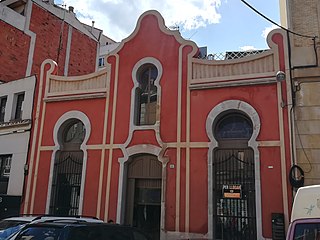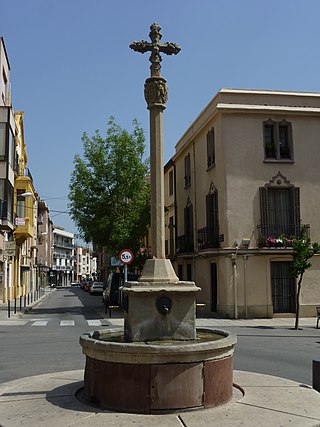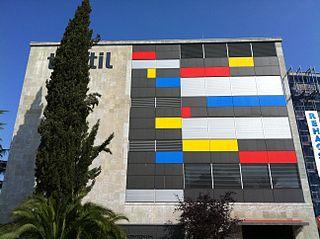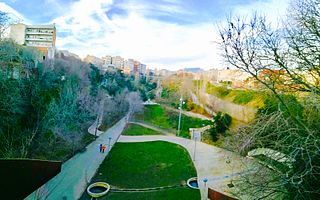Self-guided Sightseeing Tour #2 in Terrassa, Spain
Legend
Tour Facts
1.8 km
53 m
Experience Terrassa in Spain in a whole new way with our free self-guided sightseeing tour. This site not only offers you practical information and insider tips, but also a rich variety of activities and sights you shouldn't miss. Whether you love art and culture, want to explore historical sites or simply want to experience the vibrant atmosphere of a lively city - you'll find everything you need for your personal adventure here.
Individual Sights in TerrassaSight 1: Estació de Terrassa Estació del Nord (ADIF)
Terrassa Estació del Nord, formerly for Rodalies Terrassa, is a railway station and interchange for Rodalies and FGC on Passeig Vint-i-dos de Julio in the town of Terrassa, in the Vallès Occidental region. The station belongs to Adif and is part of the Barcelona-Manresa-Lleida line, with trains from the R4 line of Rodalies de Catalunya and the R12 line of the regional services of Rodalies de Catalunya, operated by Renfe Operadora. It receives its name because it was originally operated by the Compañía de los Caminos de Ferro del Norte de España. It also serves as a connection station with the Terrassa Metro, the extension of the S1 line of the Ferrocarrils de la Generalitat de Catalunya as it passes through the city. In 2022, ATM changed the name of the Rodalies station, previously called Terrassa to match its popular name and the name of the FGC station as Terrassa Estació del Nord.
Sight 2: Magatzem Corcoy
The Corcoy Warehouse is a building in the centre of Terrassa located in the Plaza de Mossèn Jacint Verdaguer, protected as a cultural asset of local interest.
Sight 3: Creu Gran
The Creu Gran is a boundary cross in the centre of Terrassa, protected as a cultural asset of local interest.
Sight 4: Museu Tèxtil
The Textile Museum and Documentation Centre is a museum institution located in Terrassa, a city with an important textile tradition. Managed by a consortium consisting of Terrassa Town Council and Diputació de Barcelona, it presents a panoramic view of the different styles and techniques used all over the world in fabric making throughout history. It is part of the Barcelona Provincial Council Local Museum Network.
Sight 5: Parc de Vallparadís
Vallparadís Park is a natural urban space located in the municipality of Terrassa, in the province of Barcelona, Spain. Its construction began in 1991, from several previous approaches during the 19th and 20th centuries, which culminated in the final drafting of the project by Manuel Ribas i Piera. The park was declared an Bien de Interés Cultural by the Government of Spain. From north to south it is about 3.5 km long, and averages about 100 m wide.
Share
How likely are you to recommend us?
Disclaimer Please be aware of your surroundings and do not enter private property. We are not liable for any damages that occur during the tours.
GPX-Download For navigation apps and GPS devices you can download the tour as a GPX file.
.jpg)



